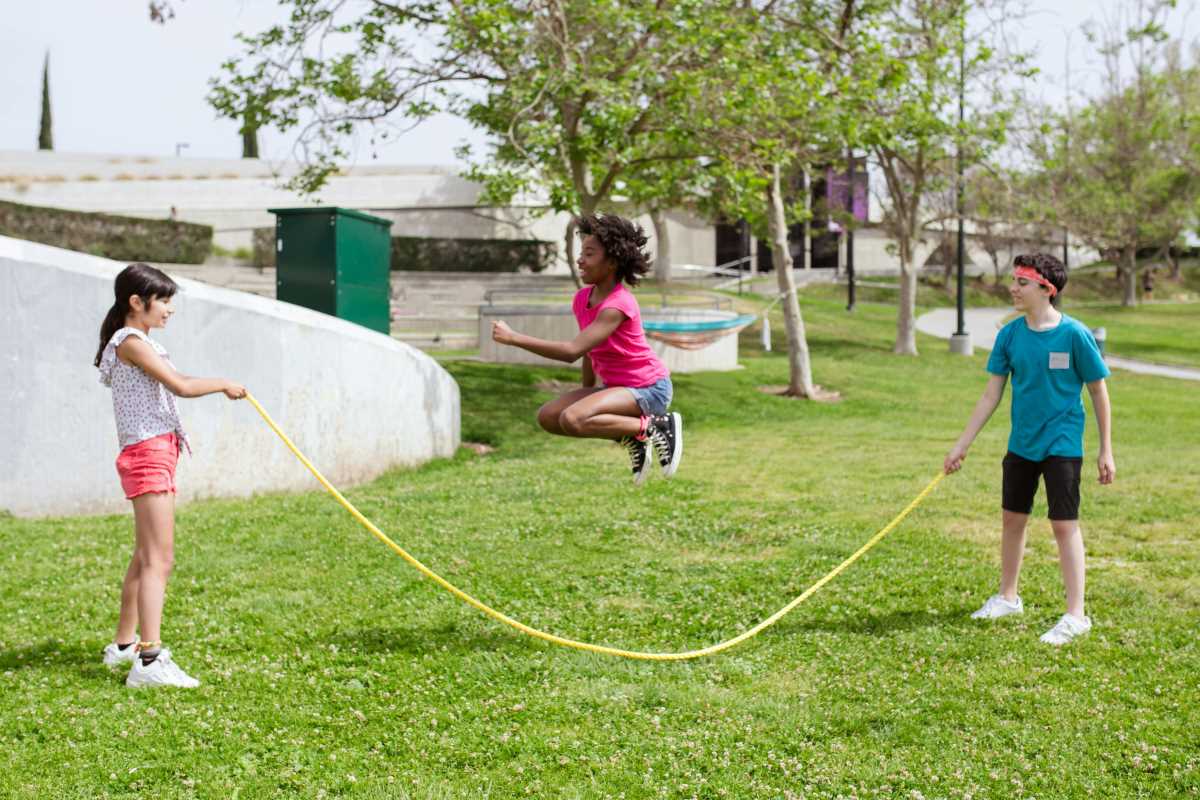Virtual learning has become a staple of modern education. It offers flexibility, convenience, and accessibility but also presents a unique set of challenges. For parents balancing work, home life, and their children's schooling, managing virtual learning can feel overwhelming. The good news? With the right strategies, parents can successfully guide their children through online learning, fostering independence, motivation, and academic growth along the way.
This guide provides practical, actionable tips for busy parents navigating virtual learning. Whether you're new to this world or looking to refine your approach, these insights will help you and your family not only survive but thrive in the digital learning environment.
Understanding the Challenges of Virtual Learning
Shifting from traditional classrooms to virtual ones involves more than just logging into a platform. It requires adapting to new schedules, technology, and even family dynamics. Here’s a closer look at the challenges parents commonly face:
- Time Management Issues: Parents often juggle work-from-home responsibilities alongside overseeing their children's schooling. Structuring the day to meet everyone's needs can feel like an impossible puzzle.
- Maintaining Focus: Home environments are filled with distractions, and children may struggle to stay attentive during online lessons.
- Technical Glitches: Device malfunctions, software updates, and shaky internet connections are unavoidable. These can disrupt lessons and strain the parent-child dynamic as everyone tries to troubleshoot.
- Lack of Social Interaction: One of the biggest drawbacks of virtual learning is limited peer interaction, which can leave children feeling isolated and unmotivated.
- Parental Stress: Acting as both parent and part-time teacher brings a new level of stress, especially when managing multiple children or a demanding job.
Recognizing these struggles enables parents to tackle them head-on. The goal isn’t perfection; it’s developing a system that works for your unique family.
Setting Up a Productive Learning Environment
A positive virtual learning experience starts with a well-organized workspace. The way you set up the environment can directly impact your child’s ability to focus and stay engaged.
Designate a Learning Zone
Rather than allowing your child to float between the couch, bed, and kitchen table, designate a specific area for learning. Here’s how to create one:
- Select a Low-Distraction Spot: Choose a quiet corner in the house where disruptions are minimal. If your child shares a bedroom, consider setting up a small desk with privacy dividers.
- Personalize the Space: Collaborate with your child to decorate their area. Adding a pinboard for notes, artwork, or motivational quotes helps them feel ownership and excitement about learning.
- Include Comfort and Essentials: Provide a comfortable chair and ensure the desk is well lit. Stock the area with essentials like pencils, chargers, notebooks, and reference material to avoid mid-session disruptions.
Ensure Access to Reliable Technology
Technology is your child’s learning bridge, so ensure it’s dependable:
- Keep software updated, especially video conferencing tools like Zoom or Google Meet.
- Have backup options for common issues, such as a mobile hotspot if the internet fails.
- Invest in noise-canceling headphones if multiple family members are working from the same space.
Organize Materials
Teaching organizational skills to your child can reduce stress and save time. Try these methods:
- Use file folders and label them by subject for quick access.
- For digital files, create separate folders for assignments, notes, and projects on your child’s device.
- Younger children might benefit from visual aids, like color-coded bins labeled for reading, writing, and math.
These small efforts create a smoother day and help your child develop habits for future success.
Structuring the Day
Routine is the backbone of virtual learning. Establishing a predictable schedule lays the foundation for productivity and balance.
Establish a Consistent Schedule
Work with your child to design a daily schedule that mirrors the structure of in-person schooling. Consider the natural flow of the day:
- Morning Preparation: Start the day with a clear routine, including breakfast, getting dressed (yes, even for virtual school), and reviewing the day’s goals.
- Focus on Core Subjects First: Place subjects requiring high focus (like math or science) earlier in the day when energy and attention are at their peak.
- Mid-Day Recharge: Include adequate time for movement, lunch, and screen-free relaxation. This re-energizes children for afternoon tasks.
- End-of-Day Wrap-Up: Take 5–10 minutes to review what was learned, organize materials for tomorrow, and celebrate achievements.
Place the schedule somewhere visible, such as on a whiteboard or near your child’s workspace. Encourage them to take ownership by checking things off as they go.
Build in Breaks
Just like adults need coffee breaks, kids need downtime to refocus. Incorporate “brain breaks” every 20–30 minutes for younger children and every 45 minutes for older students.
Examples of Effective Break Activities
- Play a quick round of hide-and-seek.
- Do 5 minutes of simple yoga or stretches.
- Watch a short funny video.
- Play outside for fresh air or ride a bike.
Breaks balance screen time and help maintain focus during workload-heavy days.
Communication and Connection
Strong communication with your child’s teachers, school staff, and even other parents builds a support network critical to virtual learning success.
- Attend Virtual Check-Ins: Use scheduled conferences not just to address concerns but to gain insight into your child’s progress. Ask for feedback on their engagement and participation.
- Model Strong Communication Skills: Show your child how to craft a polite email to a teacher when they need help. Practice this together until they feel more confident.
- Create a Family Feedback Loop: At the end of the day, ask your child how things went. Did they face any challenges? What was their favorite part of the day? Regular check-ins foster trust and openness.
Teachers are your co-pilots through this process. Reaching out before issues escalate will make the experience better for everyone.
Encouraging Independence
Virtual learning provides a unique opportunity to help children develop self-motivation and accountability.
Teach Self-Advocacy
Children grow more confident when they can solve problems independently. Encourage them to:
- Write down questions during lessons instead of interrupting.
- Use online resources like class forums to find answers.
- Politely talk to teachers about deadlines or concerns.
Practice scenarios with younger kids and role-play how they might address these issues with their teachers.
Use Tools to Promote Organization
Introduce planners, calendars, and apps that make tracking assignments fun. Some effective tools include:
- Google Keep for making to-do lists.
- Trello for organizing projects visually (great for older kids).
- Dry-erase boards for easy scheduling.
Set weekly goals together and celebrate when they reach them.
Guide Problem-Solving
Avoid jumping in with the answer when your child is stumped. Instead, coach them through the process by asking:
- “What strategies have you tried?”
- “Can you show me where you’re stuck?”
- “Which lesson or resource might help figure this out?”
Patience and gentle prompts develop critical thinking skills over time.
Navigating Sibling Dynamics
If you’re managing learning for multiple children, it can feel like you’re running a mini school. Here’s how to ease the chaos:
- Coordinate Schedules: If bandwidth is an issue, stagger Zoom calls by grade levels or rotate device usage.
- Designate Quiet Zones: Use room dividers or headphones to avoid distractions.
- Encourage Collaboration: Empower older siblings to assist with younger ones’ assignments. It reinforces their own learning while lightening your load.
By fostering teamwork, you turn potential conflicts into opportunities for growth and family bonding.
Supporting Motivation and Engagement
Virtual learning often lacks the excitement of a bustling classroom. How can you maintain your child’s drive?
Celebrate Effort
Reward perseverance with small incentives. For instance:
- Offer 20 minutes of extra screen time for completing a tough assignment.
- Create a sticker chart to track participation during classes.
Praise progress, not just perfection, to instill a growth mindset.
Tie Learning to Interests
Find ways to connect subjects to your child’s passions. If they’re artistic:
- Encourage visual note-taking to make concepts stick.
- Use interactive tools like Canva to create digital projects.
When children see how topics apply to their personal interests, they engage more deeply.
Incorporate Social Interaction
Even shy children thrive when given opportunities to connect with peers. Options include:
- Arranging virtual study groups.
- Organizing online book clubs with classmates.
- Hosting co-op Zoom discussions among parents and kids.
When learners feel part of a community, their engagement skyrockets.
Managing Expectations and Stress
Above all, be gentle with yourself and your child. Virtual learning is a work in progress for everyone.
- Acknowledge Tough Days: It’s okay if some days don’t go as planned. Learn from what didn’t work and move forward.
- Focus on Quality over Quantity: Productivity varies daily. Completing fewer tasks exceptionally well often outweighs rushing through a long list.
- Model Resilience: When setbacks happen, demonstrate calm problem-solving. Your attitude becomes a foundation your child relies on during challenges.
Taking Care of Yourself
You can’t pour from an empty cup. Self-care isn’t selfish; it’s necessary to be the best version of yourself for your child.
- Schedule quiet time before bed to meditate or read.
- Join online parent support groups for camaraderie.
- Delegate tasks to your partner, older children, or a trusted neighbor.
Remember, everyone benefits when you prioritize mental and physical well-being.







